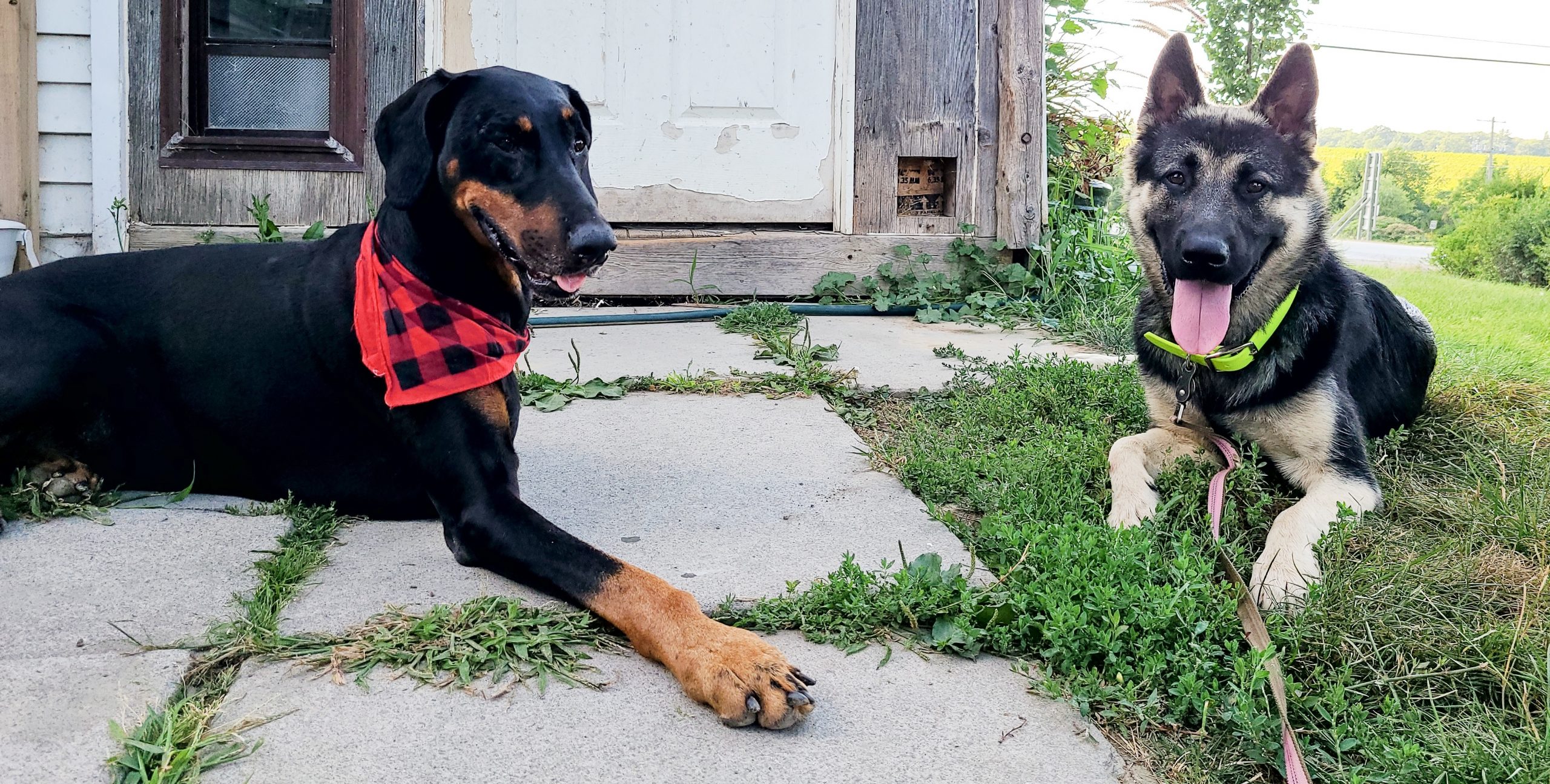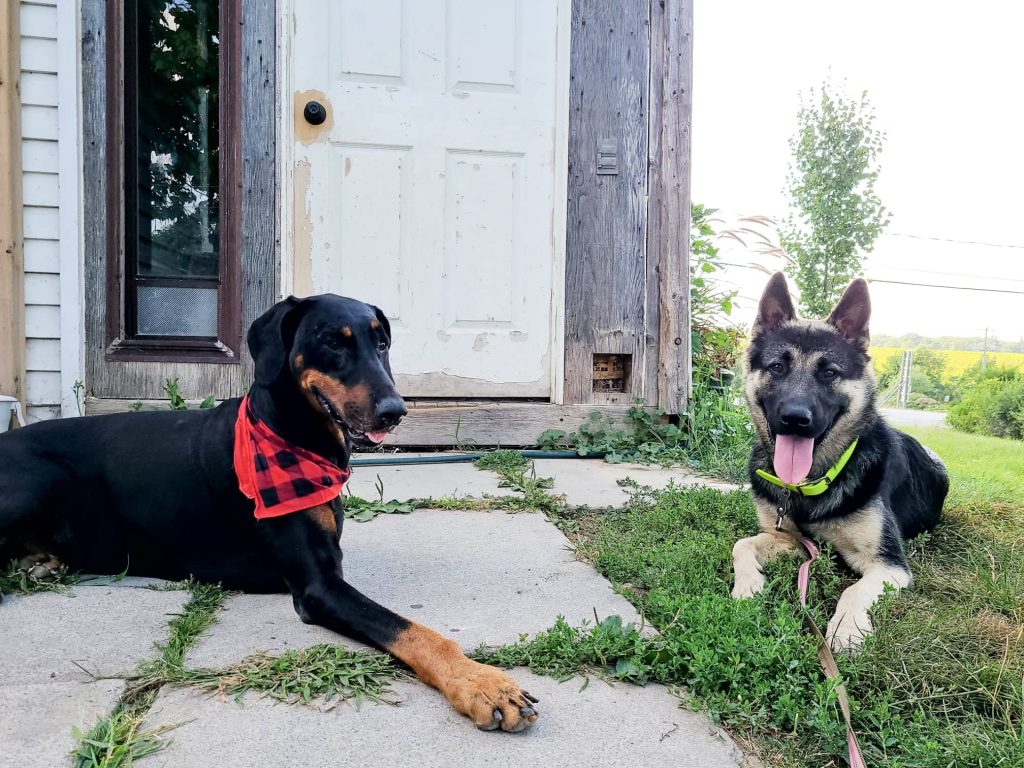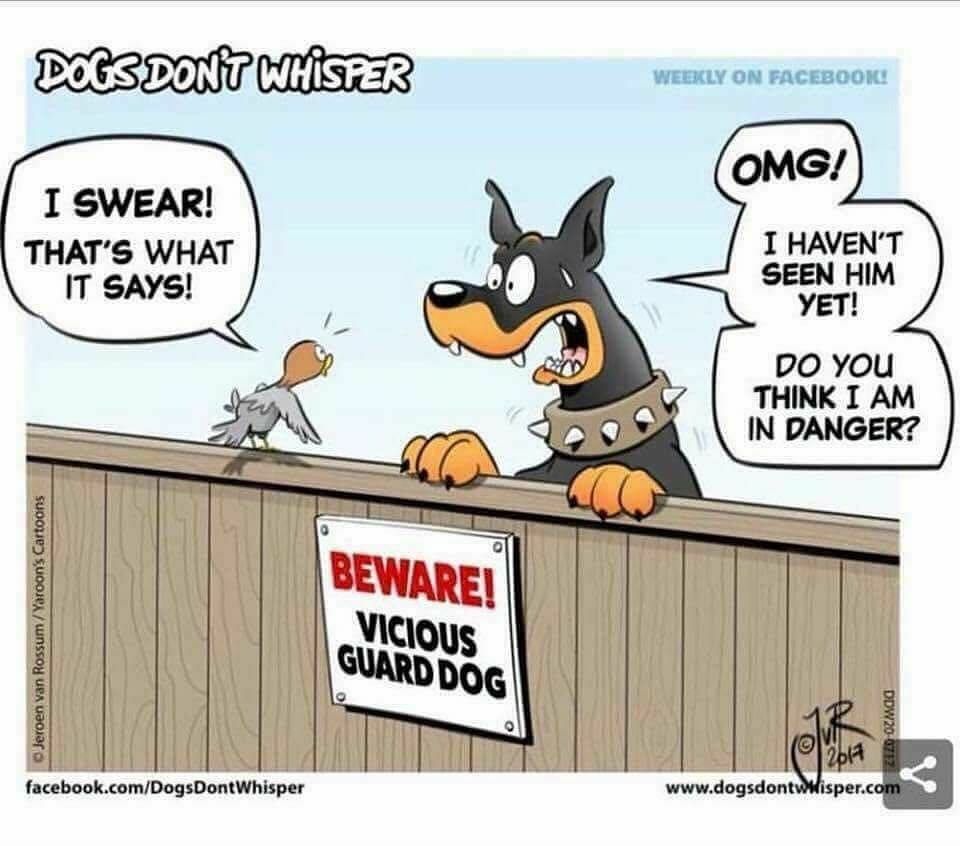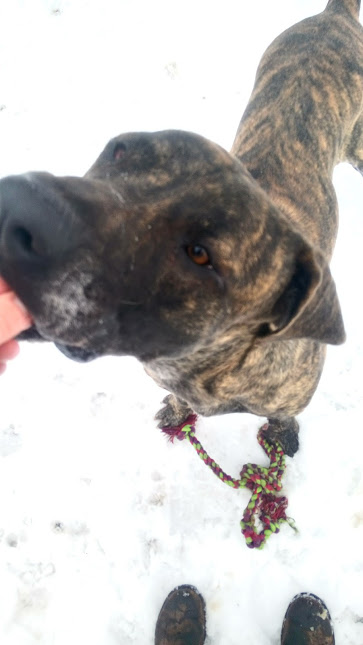One of my biggest and first concerns when I have a new foster coming is that I don’t know this dog. I will (usually) get a history from the owners before they surrender their dog to me, but it isn’t ever perfect; sometimes people lie, sometimes people just don’t know. This means that, at least for the first while with a new dog, management is the name of the game.
Management means, as much as humanly possible, managing the environment and the antecedents the dog will encounter so that they aren’t put in situations where anything bad can happen. Denise Fenzi recently said, in one of her instagram lives, that consequences become habits. And that is a really big piece of the behavioural puzzle. Of course, with management, there’s the immediate and obvious “I don’t want my dog to bite someone so I will muzzle him to prevent it” safety aspect, but more importantly, if my dog bites someone, typically because they’re fearful or need space, then that person will inevitably walk away creating the space my dog needed, so biting becomes reinforced, because it got my dog what he needed in that moment. Thusly, biting becomes more and more of a habit as it is effective at getting my dog what he needs. So I, as my dog’s advocate and as a professional, want to manage the world such that my dog isn’t put in that position.
Effective and Efficient Management
With my dog or a clients dog, we are aware of our ABCs (Antecedent, Behaviour, Consequence) so we can be specific in our management. With a new foster, sometimes knowing those ABCs – specifically the As – is a shot in the dark. As a result, while normally a pretty laid back and naturalistic dog owner, i become a complete control freak. I try to manage as many possible and potential triggers as possible while I get to know the new dog and what their actual triggers are. Once I do, I can slowly lift some of my precautions as it is reliably safe to do so.
What Does This Look Like?
This is where you get to get creative. Management can look like any of hundreds of things, depending on your home layout, your family (other pets? Humans?), your neighbourhood/yard situation, etc. Here are a few easy examples of what I’m currently doing:
Home Layout
I have a room setup for just my foster. It has a door but I’ve also put up a baby gate so that he can see and desensitize to my family walking by without access to them. It allows him to sniff the dogs through it, see my (human) partner through it, and allows my partner to throw treats through it for him. I got an extra tall baby gate as my current foster is a German Shepherd, and I don’t want to risk him jumping it. I’m using one like this:
His room has a bed (from his original home that came with him), food and water, an antler to chew, and a Kong Wobbler (one of my favourite enrichment toys!). There’s a window in his room, which I have frosted so he doesn’t get as triggered by the neighbours, which is probably my cheapest but best tip in this entire article. Frosting spray (worth it’s weight in gold!) is dirt cheap, and it makes such a huge difference to his alert barking. I’ll attach a picture here in case you haven’t heard of it.
In the home, when he has free time to wander outside his room, I have a leash on him that I let drag… just in case. And, finally, I put a “Beware of Dog” sign at my front door.
More of a visual learner? I made a walk-through video for you!
Out and About
Two points of contact – one of which is absolutely impossible to escape – is my go-to starting point. Typically I’ll do a harness and leash to use, and then have a backup slip lead which is longer than the leash I’m using(one of the only times I’ll use them!). I like having one of those as a waist leash just in case.
“Just in case” is the rules to live by, with unknown or unpredictable dogs! That and “better safe than sorry”.
Soon, I’ll transfer him to a martingale that is safety clipped to a harness, which is attached to my leash. If you don’t have access to a safety strap (seen below), a carabiner will do just fine. I will also be muzzle training, with a good basket style muzzle that he can comfortably eat, drink, and pant in.
A very important note on muzzles – and a lot of these safety tools: they are not meant so that you can put your dog in situations that they are uncomfortable with and force them through it. If you’re doing your job well, your dog never needs these tools anyways – they’re just there as a protection for mistakes. While being mindful of trigger stacking and thresholds (more on that another time, I’m sure!), we can avoid ever needing to have been so overly cautious, and we can pat ourselves on the back for that.
Happy training… and thanks for fostering, adopting, or just plain caring about training!
Note: some of the links in this article are affiliate links, so I may make a small commission if you purchase through my links. I have to fund my rescue habit somehow ;)




